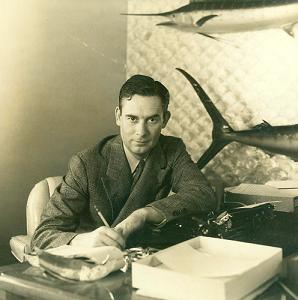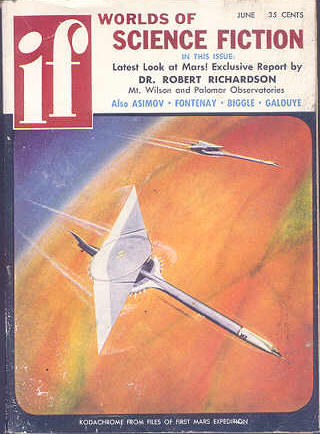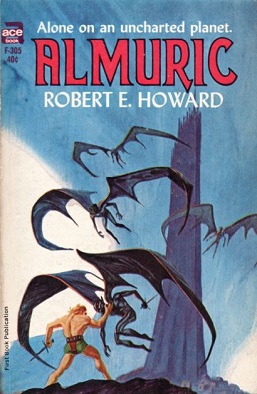
Flash Gordon is the protagonist of a space adventure comic strip created and originally drawn by Alex Raymond. First published January 7, 1934, the strip was inspired by, and created to compete with, the already established Buck Rogers adventure strip.

Time for the Stars is a juvenile science fiction novel by American writer Robert A. Heinlein, published by Scribner's in 1956 as one of the Heinlein juveniles. The basic plot line is derived from a 1911 thought experiment in special relativity, commonly called the twin paradox, proposed by French physicist Paul Langevin.

Apocalyptic and post-apocalyptic fiction is a subgenre of science fiction in which the Earth's civilization is collapsing or has collapsed. The apocalypse event may be climatic, such as runaway climate change; astronomical, such as an impact event; destructive, such as nuclear holocaust or resource depletion; medical, such as a pandemic, whether natural or human-caused; end time, such as the Last Judgment, Second Coming or Ragnarök; or any other scenario in which the outcome is apocalyptic, such as a zombie apocalypse, cybernetic revolt, technological singularity, dysgenics or alien invasion.

Flash Gordon is a 1936 superhero serial film. Presented in 13 chapters, it is the first screen adventure for Flash Gordon, the comic-strip character created by Alex Raymond in 1934. It presents the story of Gordon's visit to the planet Mongo and his encounters with the evil Emperor Ming the Merciless. Buster Crabbe, Jean Rogers, Charles Middleton, Priscilla Lawson and Frank Shannon portray the film's central characters. In 1996, Flash Gordon was selected for preservation in the United States National Film Registry by the Library of Congress as being "culturally, historically, or aesthetically significant".

Orphans of the Sky is a science fiction novel by American writer Robert A. Heinlein, consisting of two parts: "Universe" and its sequel, "Common Sense". The two novellas were first published together in book form in 1963. "Universe" was also published separately in 1951 as a 10¢ Dell paperback. The work presents one of the earliest fictional depictions of a generation ship.

La Planète des singes, known in English as Planet of the Apes in the US and Monkey Planet in the UK, is a 1963 science fiction novel by French author Pierre Boulle. It was adapted into the 1968 film Planet of the Apes, launching the Planet of the Apes media franchise.

Prelude to Space is a science fiction novel written by British author Arthur C. Clarke in 1947. It appeared for the first time in 1951 as a paperback from World Editions Inc, as number three in its series of Galaxy novels. Sidgwick & Jackson published it in the UK in 1953, followed the next year by a United States hardcover edition from Gnome Press and a paperback from Ballantine Books.

Philip Gordon Wylie was an American writer of works ranging from pulp science fiction, mysteries, social diatribes and satire to ecology and the threat of nuclear holocaust.

Mongo is a fictional planet where the comic strip of Flash Gordon takes place. Mongo was created by the comics artist Alex Raymond in 1934, with the assistance of Raymond's ghostwriter Don Moore. Mongo is depicted as being ruled by a usurper named Ming the Merciless, who is shown as a harsh and oppressive dictator.

After Worlds Collide (1934) is a sequel to the 1933 science fiction novel, When Worlds Collide. Both novels were co-written by Edwin Balmer and Philip Wylie. After Worlds Collide first appeared as a six-part monthly serial in Blue Book magazine. Much shorter and less florid than the original novel, this one tells the story of the survivors' progress on their new world, Bronson Beta, after the destruction of the Earth.

Edwin Balmer was an American science fiction and mystery writer.

Iron Munro is a superhero character appearing in American comic books published by DC Comics. Roy Thomas created the character in 1987 for Young All-Stars. He largely served to replace Superman in stories set during World War II after the Crisis on Infinite Earths storyline eliminated continuities in which Superman was active in this period.
The Alliance–Union universe is a fictional universe created by American writer C. J. Cherryh. It is the setting for a future history series extending from the 21st century into the far future.

When Worlds Collide is a 1951 American science fiction disaster film released by Paramount Pictures. It was produced by George Pal, directed by Rudolph Maté, and stars Richard Derr, Barbara Rush, Peter Hansen, and John Hoyt. The film is based on the 1933 science fiction novel of the same name, co-written by Edwin Balmer and Philip Wylie.

"Does a Bee Care?" is a science fiction short story by American writer Isaac Asimov. It was first published in If: Worlds of Science Fiction in June 1957, and reprinted in the 1975 collection Buy Jupiter and Other Stories. Gold Key Comics also published a comic book version of the story in 1976 in #4 of the four issue science fiction series Starstream: Adventures in Science Fiction. It also appeared in 1976's Questar: Illustrated Science Fiction Classics, published by Golden Press and adapted by A. Moniz with artwork from Jack Abel and in 1975 in Buy Jupiter and Other Stories.

The origin of Superman and his superhuman powers have been a central narrative for Superman since his inception, with the story of the destruction of his home planet, his arrival on Earth and emergence as a superhero evolving from Jerry Siegel's original story into a broad narrative archetype over the course of Superman's literary history and as the character's scope continues to expand across comics, radio, television and film.

Almuric is a science fiction novel by American writer Robert E. Howard. It was originally serialized in three parts in the magazine Weird Tales beginning in May 1939. The novel was first published in book form in 1964 by Ace Books.

One in Three Hundred is a science fiction novel by British writer J. T. McIntosh. It was originally published as three novellas in The Magazine of Fantasy and Science Fiction in 1953-54, and was then published by Doubleday & Company, Inc. During 1956 the novel was reissued by Ace as Ace Double D-113, in a dos-à-dos binding with Dwight V. Swain's The Transposed Man.
Buck Rogers is a science fiction adventure hero and feature comic strip created by Philip Francis Nowlan first appearing in daily U.S. newspapers on January 7, 1929, and subsequently appearing in Sunday newspapers, international newspapers, books and multiple media with adaptations including radio in 1932, a serial film, a television series, and other formats.
















